Trinity (formerly St Martin's) Lutheran Church
Main Road, Rosedale
B. Lohrmann; inst present loc 1890;
alterations 1988-90 Radford.
1m, 6spst, tr. Man: (all divided) 8.8.4.4.2. Ped:8.
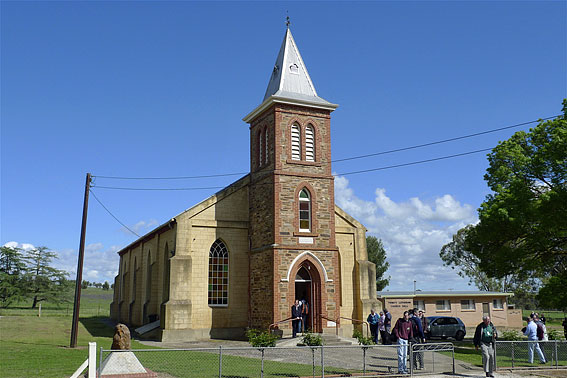
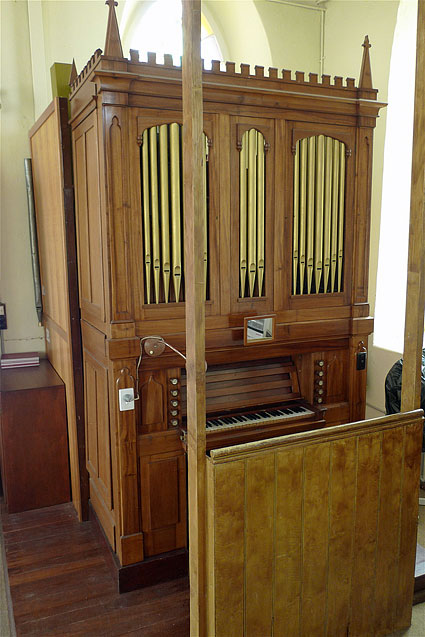
The specification below is taken from 1986 OHTA Conference booklet.
| Manual Open Diapason Stop Diapason Dulciana Principal Fifteenth Pedal Stopped Wood |
8 8 8 4 2 8 |
(appears to be added) |
compass 61/22
electric blower installed by Waters
all wooden pipes
tracker action
located at back wall
From
the 2009 OHTA Conference Book, David Shield writes:
Rosenthal
began as a group settlement. Seven
families settled in the area after arriving in December 1849. Schooling began in 1851, and the church
of St Martin, now known as Trinity, was dedicated in 1860. Division soon after led to the
formation of a second church, St John’s, that was to coexist for the next 40
years. It is not known whether St
John’s had a pipe organ but St Martin’s acquired its organ in 1890. For some time there was uncertainty as
to its provenance and an inscription on one of the pipes provides a conundrum
yet to be resolved.
Two
years after the settlement of Hoffnungstahl in 1847, the first settlers arrived
at Rosenthal. Emigration agent
Edward Delius had gathered a large group from the Kingdom of Saxony who arrived
on the Alfred on 6 December
1848. Among them was a group from
the Wendish area, called Upper Lusatia, who took up land in the hundred of
Barossa calling it Rosenthal, meaning Rose Valley. Seven heads of families erected a place of worship and
schooling with pastor H.A.E. Meyer, of Bethanien, as their pastor. Most were to emigrate to Western
Victoria in the 1850s, but many others took up land in the vicinity and by 1855
there were at least 66 families in the area. They joined with Hoffnungstahl in calling Pastor Oster as
their pastor. The foundation stone
of St Martin’s was laid on 31 October 1859 and Oster remained with the
congregation until his death in 1897.
The
tower and bell for the church were dedicated on 3 July 1910. No mention of the organ was made at his
time.1 However, it is
known that it was acquired by September 1890. It was dedicated on 15 September 1890 and was made by C.
Lohrmann, of North Adelaide.2
Simon Carl Lohrmann, a carpenter, was aged 76 at this time and it is
postulated the organ came from within the family. He had three sons, Moritz, George, and Charles. Although Lohrmann was involved with
pipe organs there is little evidence he was commercially successful in their manufacture.
In
August 1864, a reporter from the Advertiser newspaper had inspected two chamber organs built
by Lohrmann. One had eight stops,
including an 8ft Stopped Diapason, with 281 pipes and no pedals, the feet being
left to work the bellows, wind being supplied in the same way as harmoniums. It was made locally except for the
importation of the ivory plates for the keys. The other was the stuff of folk tale, from his time working
under Buchanan at Anlaby station, where he put by choice pieces of wood and
carefully preserved old bones which he scraped down and polished for the
keys! Apparently it was listened
to, and made a favourable impression.
Both instruments were mentioned as examples of ingenuity and
perseverance.3
There
are only three other references known to date. In 1869, Lohrmann added a second manual of four stops to the
organ at Christ Church, North Adelaide.
Although it initially received a positive response, within a year Henry
Dutton, organist of the church, was very critical and making moves for the
church to purchase a new instrument.4 In 1874, Lohrmann with his son, presumably Moritz,
successfully tendered for the erection of the Speechley and Ingram organ for
Stow Congregational Church.
Although they apparently had some difficulty, satisfaction was expressed
with the work.5 Two
years later, Lohrmann was responsible for alterations and repairs to the organ
at the Wesleyan Methodist Church in Archer Street, North Adelaide, which led to
much improvement.6
Lohrmann’s
wife died in 1878 aged 73. She was
nine years his senior. While
actual family relationships are unknown, without her support or, seemingly,
that of his children, Lohrmann was to die in penury. He was to get behind in his mortgage payments to the Bank
and was unceremoniously evicted from his house, to end his days in the Home for
the Destitute, in 1898. Maurice
had died two years previously from cancer of the throat while visiting his
father in the Home. It is assumed
at this point that the organ now at Rosedale was in the home of either of the
remaining two sons, Carl Theodore, a storekeeper and auctioneer at Yorketown,
or George Ludwig, clerk of the Freeling Council.
An
interesting inscription is to be found on the CC pipe of the Diapason rank of
the organ at Rosedale. This reads:
“Repariet February 15, 1889 von J. Clement, Hamburg, Orgelbauer”.7 This has led to the proposition that
the organ was probably in Germany at the time. An alternate view is that J. Clement from Hamburg was
actually in South Australia. A
review of various genealogical sources for the time is inconclusive. There was a J[ohn] Clement listed as a
saddler at Bassett Town near Gawler in 1883 and Yorketown in 1886. Edward Clement was the name for the
miller at Stockwell from 1854 and also that of the chaff merchant and later
Mayor of Gawler. Any connections
to the organ have yet to be made though it is noted that Lohrmann’s son Carl,
and John Clement both lived in the same area, and the article referring to the
organ’s dedication indicates C. Lohrmann rather than S.C. Lohrmann.
Before
being able to identify the builder, Stiller pointed to the organ being a
mixture of style. The casework is
Australian red cedar whereas the three flats of display pipes are flat-backed
wooden dummies and the trackers to the pallets pass through brass sleeves, an
English trait. The pipes are not
supported by rack boards, which is a German characteristic. All pipework is of wood. This suggests perhaps that the
instrument was made by Lohrmann and rebuilt or “repaired” at some time. Both the pedal rank and the five-octave
keyboard appear to be later additions.
Stiller also queries the originality of the single rise bellows.8
In
1993, the congregation wished to have the instrument renovated and sought the
advice of Mr Christopher Radford, a well known sculptor of Freeling, who
claimed knowledge of organs in England before the war. As a result of his
report, Mr Radford endeavoured to undertake repairs on the pedal board and
pipework.9
S.C. Lohrmann
1 manual, 6 speaking stops, mechanical action
|
MANUAL |
|
|
|
Open Diapason |
8 |
|
|
Stop Diapason |
8 |
|
|
Dulciana |
8 |
|
|
Principal |
4 |
|
|
Fifteenth |
2 |
|
|
|
|
|
|
PEDAL |
|
|
|
Stopped Wood |
8 |
|
Compass: 61/22
Attached drawknob console
Location: rear wall, under
a canopy
| Left stop jamb Pedal Diapason Dulcian Bass Principal Bass Open Diapason Bass Stop Diapason Bass |
8 ft |
Right stop jamb Fifteenth Dulcian Principal Open Diapason Stop Diapason |
Full compass 4 ft |
Stops divide at Middle C
Pedal - C to A (22 notes) with no pedal coupler
All pipes wooden
_________________________________________________________________________
1 Stiller J., Documentation
Trinity Lutheran Church Rosedale 22
March 1979, 4 December 1979. Reference is made to a brief history of
the church in 1910 where no organ was mentioned: Der Lutherische Kirchenbote für Australien (1910), p.123
2 Newspaper article in Australische
Zeitung, 15 September 1890,
enclosed with letter E.A. Wittwer to S. Kaesler 30 September 1996
3 Advertiser, 20 August 1864, p. 2.5
4 Adelaide Observer, 6 March 1869, p.5.4; Register,
13 April 1870, p. 3.5
5 Advertiser, 9 June 1874, quoted in Naylor, B.A., Organ
Building in South Australia
(unpublished thesis, M.Mus, University of Adelaide, 1973)
6 Register, 13 November 1875, p. 5.2; Advertiser, 13 November 1875, p. 4.6
7 see ‘Rosedale Secret
Revealed’, OHTA News, vol.11
no.1 (January 1987), p.17
8 Stiller J,. op.cit.,
pp.1,2,3
9 Radford is known for various
sculptures, e.g. the bronze statue of a man with his Clydesdale, “Day Off Pete”,
at Angaston: Barossa Herald, 21
May 2008, p.6; or a sculpture of Colin Thiele located in the Eudunda Memorial
Gardens, ibid., 9 November 1995.
See also: ‘Rare Barossa Valley Organ Altered’, OHTA News, vol.17, no.1 (January 1993), pp.4-5
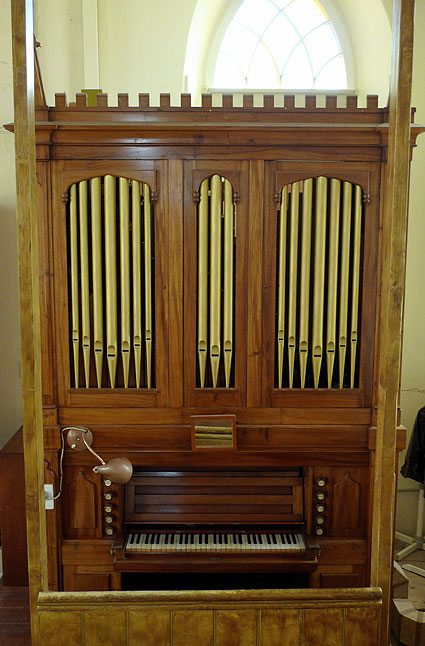 |
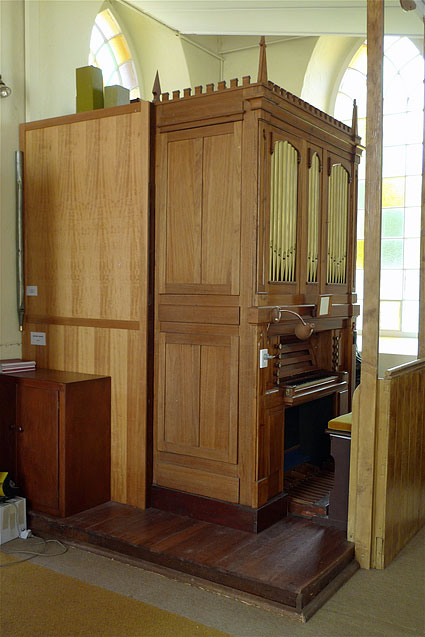 |
|
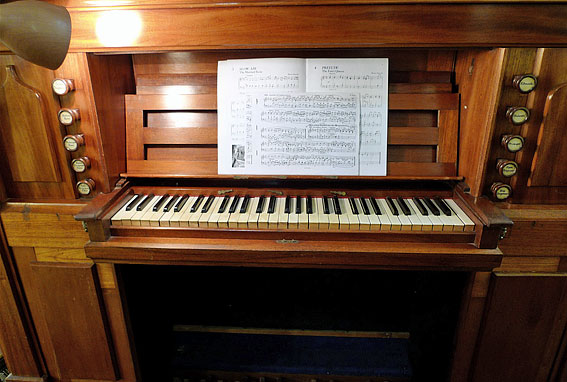
|
||
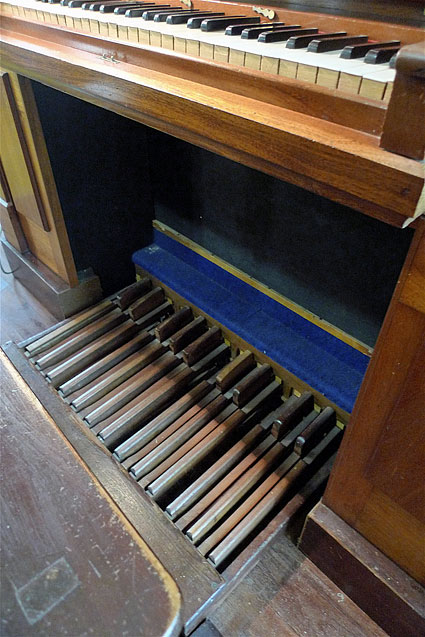 |
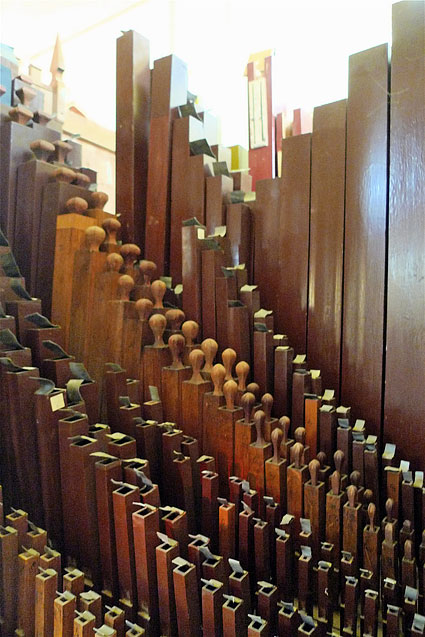 |
|
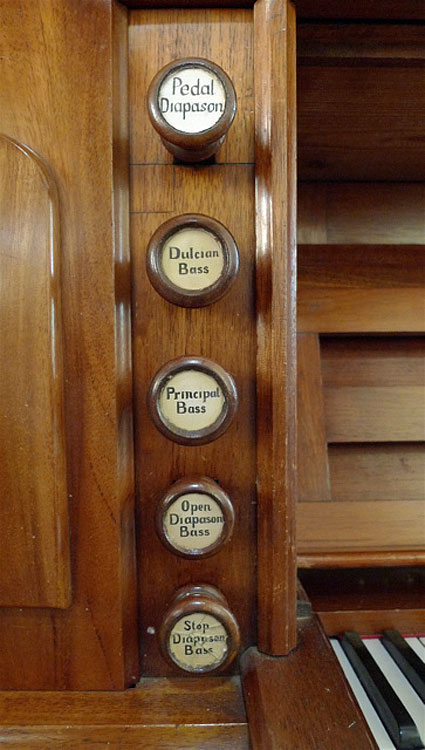 |
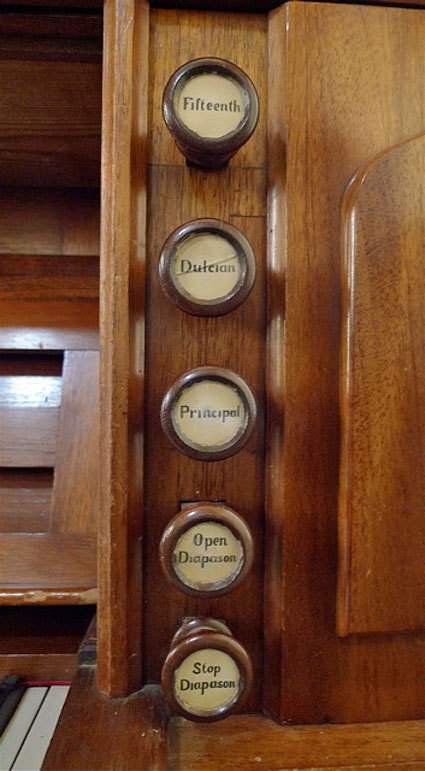 |
|
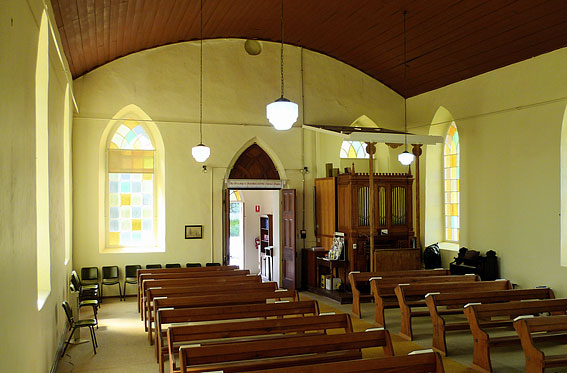
|
||
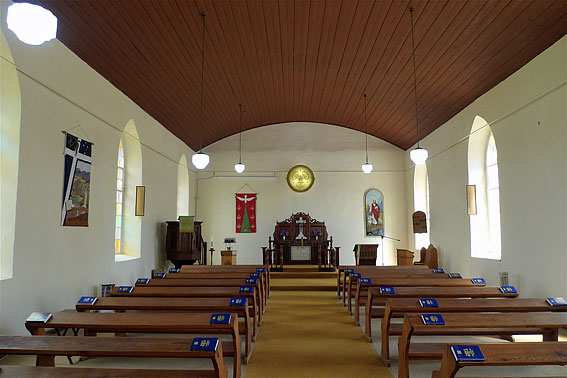
|
||
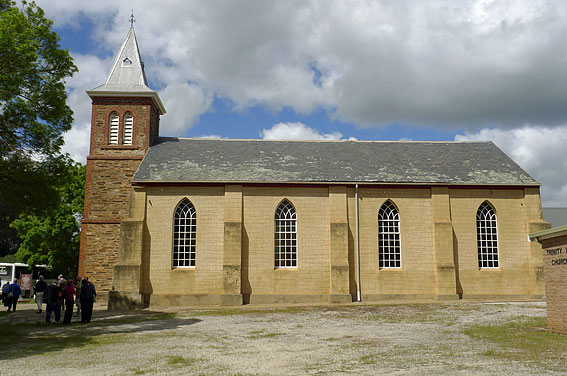
|
||
Photos: Trevor Bunning (Oct 2009)